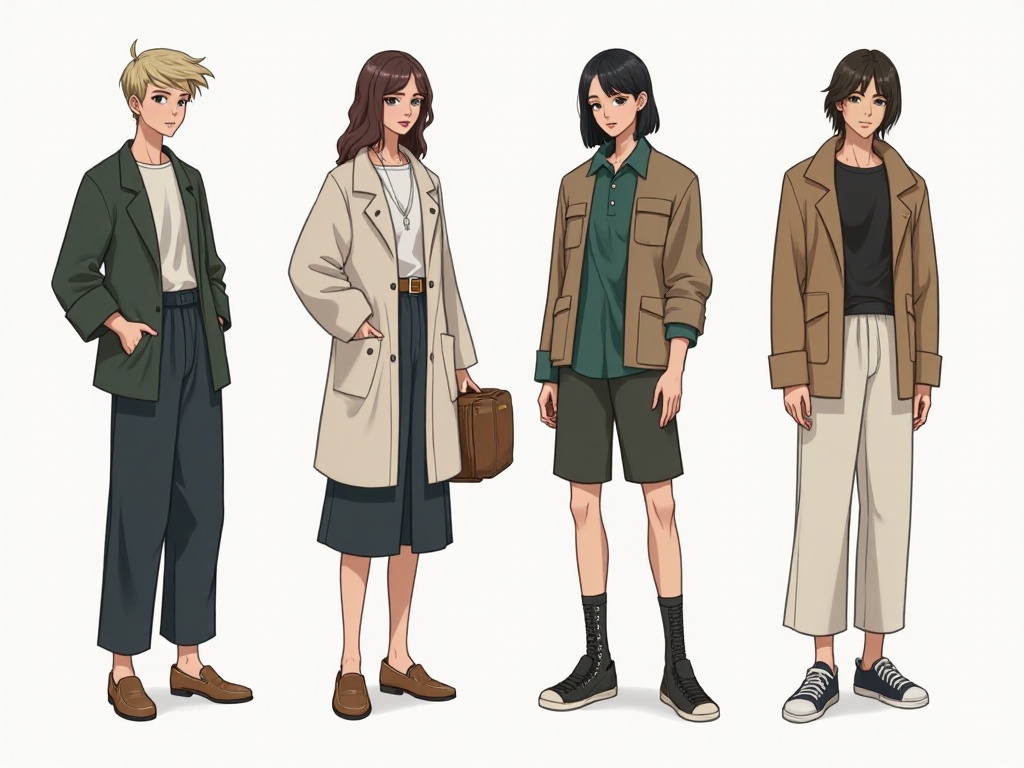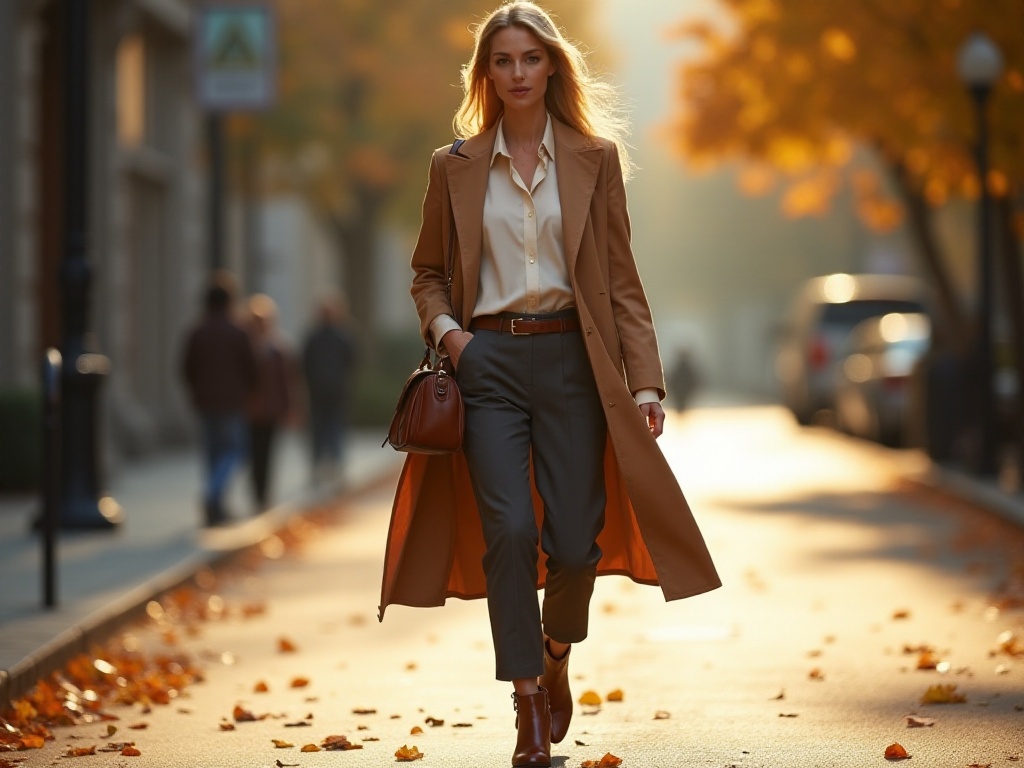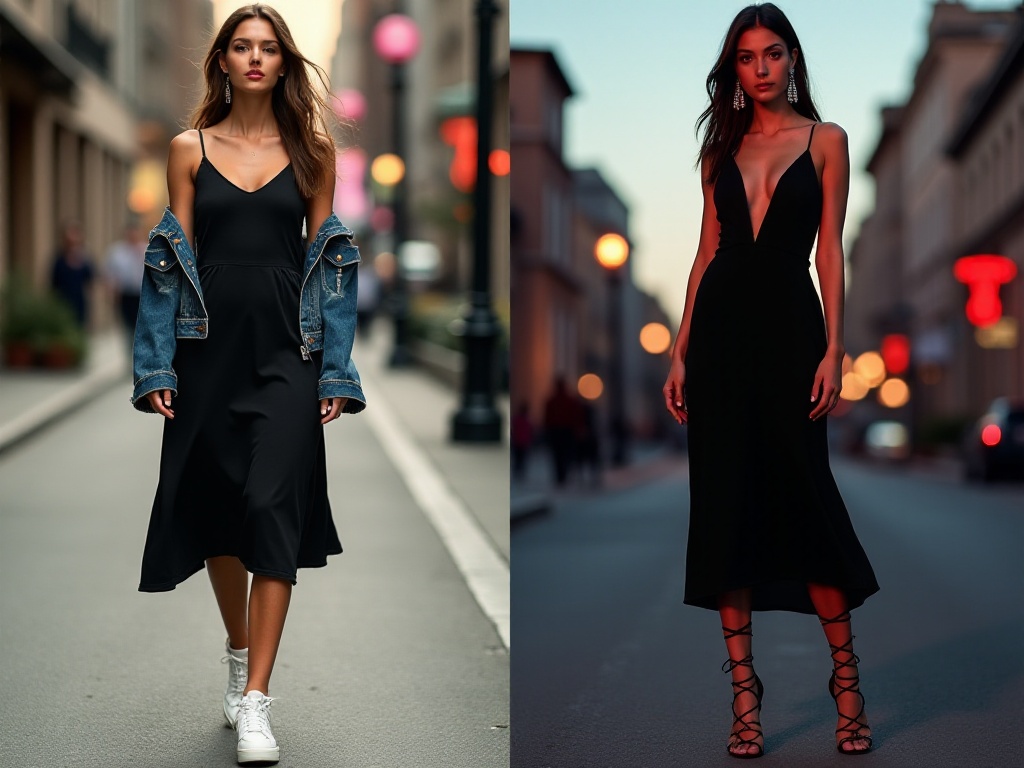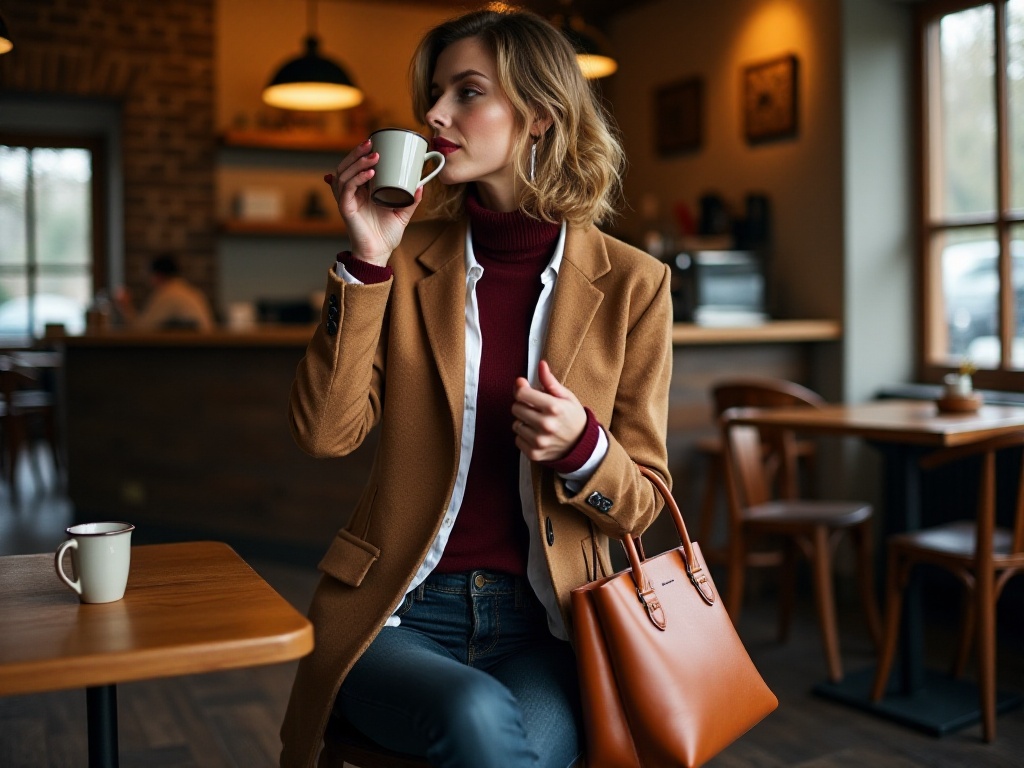Introduction
Standing in front of my packed closet, I often feel lost. Despite having clothes stuffed to the brim, I still face the "nothing to wear" dilemma whenever I need to go out. What's more frustrating is seeing a beautiful piece of clothing on social media, immediately ordering it, only to find it looks completely different on me. I believe many fellow girls have experienced this struggle. As someone who went from knowing nothing about fashion to now being able to effortlessly dress in my own style, I want to share my journey and experiences with everyone.
Understanding Your Skin Tone
Many people think that being fashionable is just about buying clothes, but understanding your skin tone is actually the first step in fashion awakening. When I first started exploring fashion, I stumbled quite a bit on this issue. Back then, I would buy whatever influencers were wearing. Once, I fell in love with a milk tea-colored knit sweater that looked so gentle on the blogger, but when I excitedly received and tried it on, I looked as yellow as if I had eaten pounds of curry.
After some research, I had an epiphany: skin tones can be warm or cool. Warm skin tones have natural golden undertones and tan into a healthy wheat color, while cool skin tones lean towards pink-white and develop a rosy brown tan. Finding out your skin tone is simple - just look at the color of your veins on your inner wrist. If they appear green, you have warm undertones; if they look blue-purple, you have cool undertones.
Once you've determined your skin tone, choosing suitable colors becomes much easier. People with warm skin tones look particularly good in camel, apricot, coral orange, vintage red, military green, and other earth tones. These colors complement the golden undertones in their skin, making them appear warmer and brighter. Plus, these colors are very versatile, easy to style for both daily commutes and weekend dates.
People with cool skin tones can boldly try royal blue, mint green, pink-purple, cool grey, and similar shades. These colors enhance the translucent quality unique to cool skin tones, making one appear fresh and otherworldly. Metallic fabrics especially look high-end on people with cool skin tones.
As someone with typical warm undertones, this discovery completely transformed my wardrobe. Previously, I bought clothes purely based on preference, often attracted to ethereal light colors. But when wearing them, something always felt off, making me look drained. Now I prioritize warm tones, especially earth-toned pieces, which not only show my temperament but are also very wearable.

Color Matching Tips
After mastering colors that suit you, the next challenge to tackle is color coordination. Speaking of my color matching history, it's quite an emotional journey. When I first started exploring fashion, I thought more colors meant more style, often dressing like a rainbow lollipop. Looking back at old photos now, I wish I could delete them all.
Through continuous exploration and learning, I finally summarized some practical color matching techniques. First, monochromatic coordination is definitely the easiest method for beginners. For example, you can choose dark blue wide-leg pants paired with a light blue shirt and a medium blue cardigan - such a combination looks very harmonious. Plus, monochromatic matching makes you look taller, which is a blessing for those who aren't naturally tall.
Another color matching technique I often use is complementary colors, but this method requires special attention to color proportion. Take the classic blue and orange combination - if you want to try this pairing, you could choose a dark blue pleated skirt as the main color, then accessorize with a small orange crossbody bag or tie an orange silk scarf. This creates a fashionable look without being too dramatic.
Neutral colors are also great helpers in color matching. Black, white, and grey are versatile colors that can nicely balance vibrant shades, making the overall outfit look more coordinated. For instance, if you want to try a bright red top, you can pair it with black straight-leg pants and white sneakers to balance the overall visual effect.
Another tip is to reference color combinations from nature. For example, the golden yellow of autumn ginkgo leaves pairs harmoniously with the deep blue sky, or spring's pink cherry blossoms with tender green new leaves make for a lovely combination. Nature's color combinations never go wrong, and I often notice these natural color schemes in daily life and apply them to my outfits.

Creating Layered Looks
When it comes to elevating your outfit, layering is absolutely essential. Many people think layering is only possible in winter, but this is completely wrong. Even in hot summer, we have many ways to create rich layers.
The simplest method is creating layers through varying lengths of pieces. For example, a basic white T-shirt paired with high-waisted wide-leg pants is already a classic combination. But if you casually drape a sun-protective shirt over it, the entire outfit immediately becomes more interesting. Sun-protective shirts now come in many varieties - cotton, chiffon, silk, etc. - different materials can show different styles.
Layering with dresses is also easy to achieve. A simple dress with a light cardigan not only provides sun protection but also adds layers to the look. If you find regular cardigans too plain, you can choose designs with special details like puff sleeves or ruffles - these details can make the overall outfit more striking.
Accessories are also great tools for creating layers. A belt can easily define the waistline and make the overall look more three-dimensional; a scarf can be tied around the neck or attached to a bag, both adding layers to the outfit. Some unique accessories like brooches, earrings, and bracelets, though small, can make the overall look more refined.
Besides vertical layering, horizontal layering is also important. For example, you can choose asymmetric designs or patchwork pieces, which can add interest to the outfit. You can also create layers through the contrast of different materials, such as silk with knits, or leather with linen combinations, which can produce great visual effects.
Material selection is also key to creating layers. Even in the same color, different materials will present different effects. For example, a black leather jacket paired with a black knit sweater, though both black, creates richness through the contrast of different materials. When choosing materials, pay attention to seasonality and occasion appropriateness to achieve both comfort and style.
Speaking of layering, we must mention proportion in styling. Short top with long bottom, or long top with short bottom are common styling methods - the key is choosing based on your body type. If you're shorter, it's recommended to choose a short top with long bottom to make legs appear longer; if you're taller, you can experiment with various proportions for unexpected effects.
In daily life, we can also add layers through small techniques. For example, casually tucking in part of a shirt, or partially tucking in a sweater - these seemingly casual moves can add considerable layers to an outfit. However, these details should look natural, not forced, otherwise they might appear affected.
Finally, I want to say that creating layers isn't about more being better, but finding the right balance for yourself. Sometimes simple combinations better highlight personal style - the key is letting each piece play its proper role in the overall look.
Through this period of exploration and practice, I deeply feel that fashion is an art requiring continuous learning and accumulation. It's not just about buying and matching clothes, but about self-awareness and expression. I hope through my sharing, I can help more girls find their own fashion aesthetic and walk more confidently on their fashion journey.







